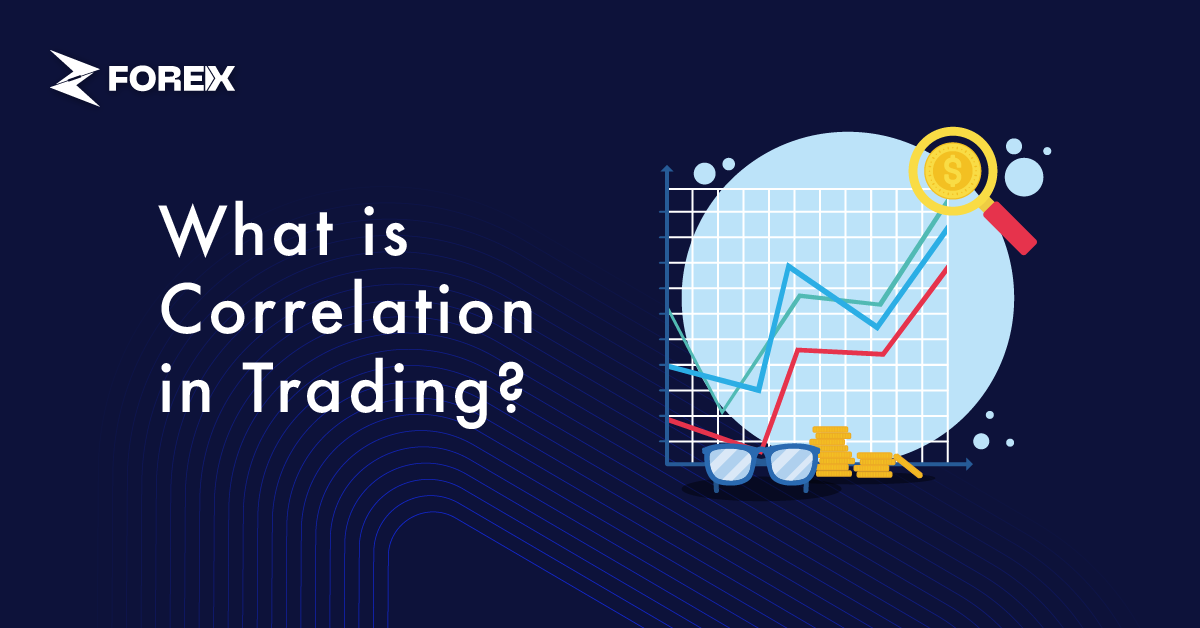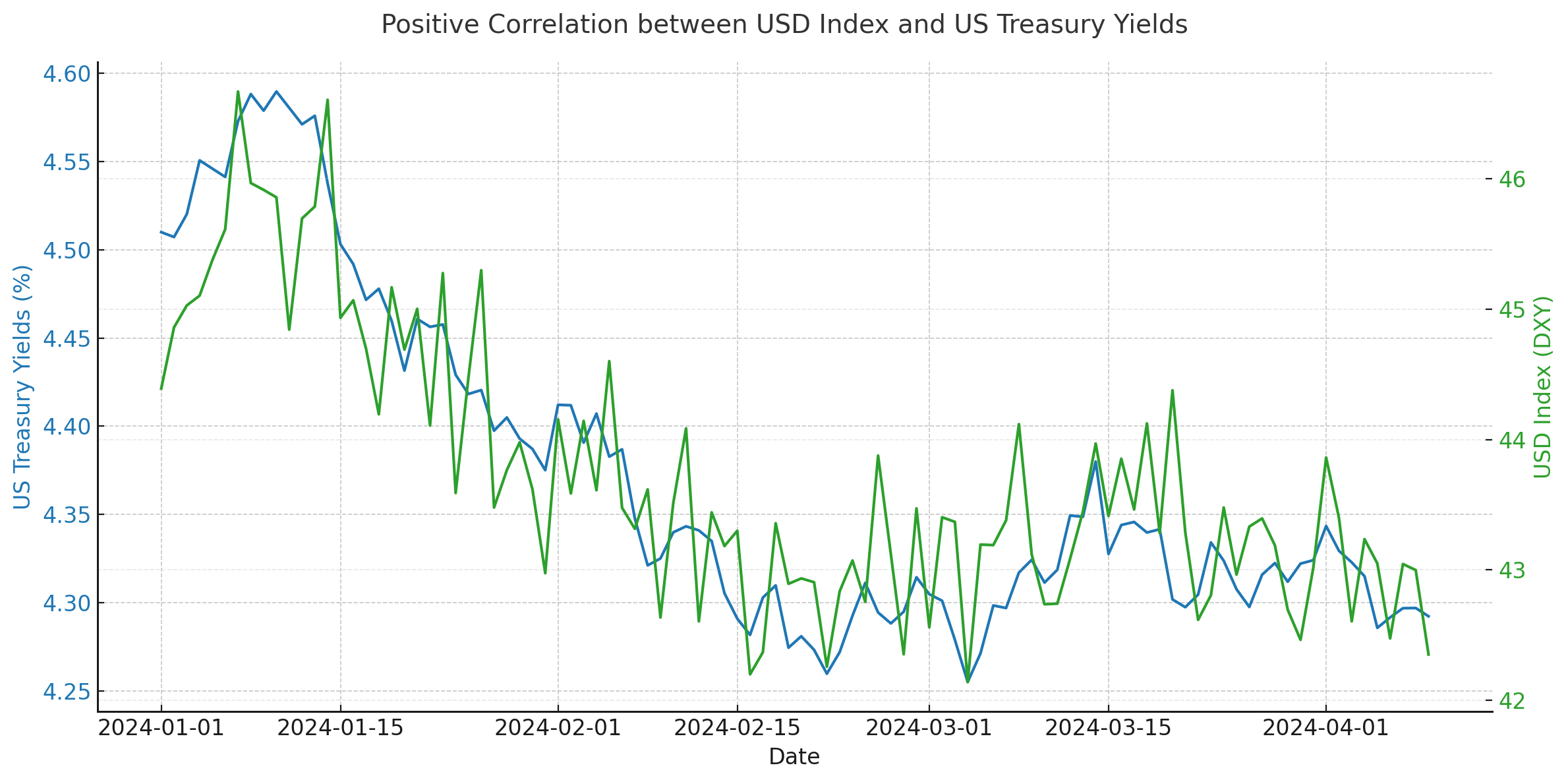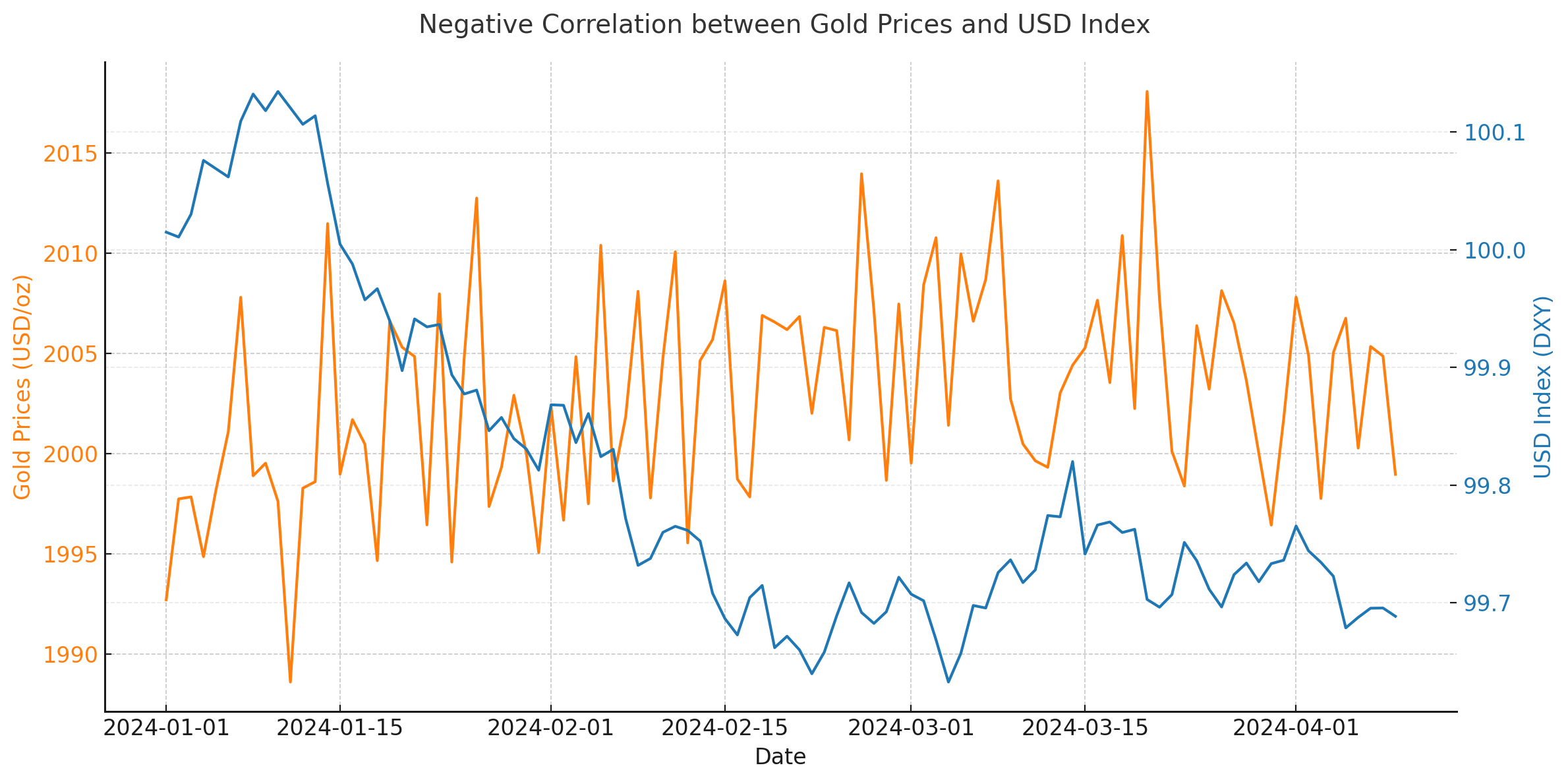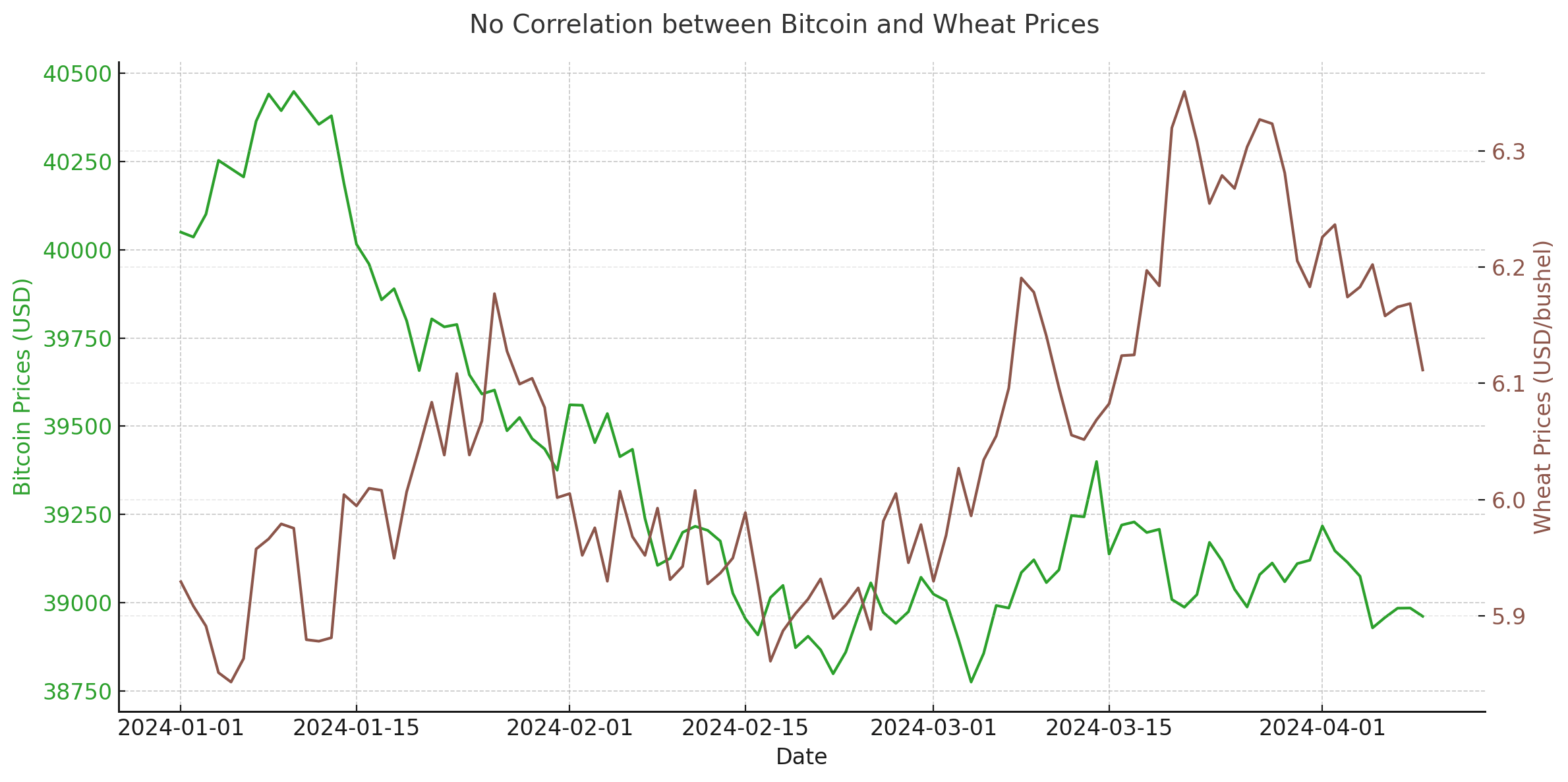
Correlation defines the relationship between the price movements of two or more assets and measures how they respond to each other. Traders can maximize their returns by considering correlations when building portfolios or developing trading strategies.
Correlation typically ranges from -1 to +1. Positive correlation (between 0 and +1) indicates that the prices of two assets generally move in the same direction. For example, if there is a positive correlation between the prices of two stocks, when one rises, the other tends to rise as well.
Negative correlation (between -1 and 0), on the other hand, indicates that assets generally move in opposite directions. When one asset rises, the other may decline.
It's a great aid for traders in diversifying their portfolios. If an investor selects instruments with low or negative correlation within their portfolio, they can reduce the risk. This is because when the value of one asset decreases, the negatively correlated asset may rise, offsetting the loss.
In our article, you will find detailed information on the use of correlation in trading.
Correlation helps traders understand how the price movements of assets are related and what kind of impact these relationships can have on the market. Knowing whether there is a positive, negative, or zero correlation between two assets offers investors a deeper understanding of market dynamics and potential opportunities.
The key insights that correlation offers traders are as follows:
The Pearson Correlation Coefficient is typically used to measure how two variables respond to each other. This coefficient expresses the relationship between two assets with a value ranging from -1 to +1.
The steps to calculate correlation are as follows:

This formula calculates the covariance between two assets, dividing it by the standard deviation of each asset to determine the correlation. The result will be a value between -1 and +1.
There are 3 main types for correlations in trading:
This indicates that the price movements of two assets are in the same direction. In other words, when the price of one asset rises, the price of the other asset tends to rise as well. Positive correlation ranges between 0 and +1. To give an example, two stocks in the same sector may have a positive correlation.

When US Treasury yields increase, the US Dollar (USD) typically strengthens due to higher interest rates attracting foreign investment.
This indicates that the prices of two assets move in opposite directions. When the price of one asset rises, the price of the other asset tends to fall. Negative correlation ranges between -1 and 0. For example, there is often a negative correlation between gold prices and stock prices; when one rises, the other may fall.

Gold usually moves inversely to the US Dollar; when the USD strengthens, gold prices tend to decline, and vice versa.
Zero correlation means that there is no relationship between two assets. In other words, when the price of one asset changes, it has no significant effect on the price of the other asset. If the correlation coefficient is close to 0, it can be said that there is no meaningful relationship between the assets.

Bitcoin prices have virtually no consistent relationship with the price movements of agricultural commodities, as they're influenced by entirely different market factors.
Let's start with an example from Forex. A well-known example is that EUR/USD and GBP/USD pairs generally have a high positive correlation. This is because both pairs are traded against the U.S. dollar, and the Euro and British pound are connected to European markets.
These two pairs typically move in a similar way. For instance, during a period when the U.S. dollar weakens, both EUR/USD and GBP/USD tend to rise.
Gold and crude oil, on the other hand, can be shown as two commodities that have a negative correlation. These two assets react differently to various economic conditions and risk factors.
For example, in times of economic uncertainty, traders turn to gold, and gold prices rise. However, during the same period, with a decrease in global demand, oil prices may start to decline. In this case, we can say that there is a negative correlation between gold and oil.
Correlation coefficients determine how closely the price movements of two currency pairs are related, and this relationship can be either positive or negative. For example, there is a 77% high positive correlation between the EUR/USD and GBP/USD pairs. This means that when the Euro/Dollar pair rises, there is a 77% probability that the Pound/Dollar pair will also move in the same direction.
Similarly, the EUR/USD pair has a strong negative correlation of -79% with the USD/CAD pair, indicating that these two pairs generally move in opposite directions.
Additionally, there is a strong positive correlation of 88% between the GBP/USD and GBP/JPY pairs. Since the first currency in both pairs is the British pound, this high correlation can be attributed to the movements of the US dollar and the Japanese yen.
| Period | AUD/USD | GBP/USD | NZD/USD | USD/CAD | USD/CHF |
| 1 Day | -0.09% | 0.77% | -0.49% | 0.11% | -0.53% |
| 1 Week | 0.70% | 0.80% | 0.70% | -0.55% | -0.68% |
| 1 Month | 0.82% | 0.92% | 0.71% | -0.62% | -0.36% |
| Period | EUR/USD | USD/JPY | USD/CHF | USD/CAD | AUD/USD | NZD/USD | EUR/JPY | EUR/GBP |
| 1 week | 0.94 | -0.21 | -0.95 | -0.9 | 0.94 | 0.87 | 0.88 | 0.64 |
| 1 month | 0.13 | -0.13 | -0.24 | -0.26 | 0.31 | 0.2 | -0.1 | -0.39 |
| 3 month | 0.83 | -0.62 | -0.79 | 0.21 | 0.7 | 0.49 | 0.41 | 0.26 |
| 6 month | 0.31 | 0.14 | -0.07 | 0.17 | -0.02 | -0.16 | 0.49 | -0.45 |
| 1 year | 0.88 | -0.51 | -0.87 | -0.89 | 0.87 | 0.86 | 0.69 | -0.45 |
| Period | EUR/USD | USD/JPY | GBP/USD | NZD/USD | USD/CHF |
| 1 Day | -9.20% | 81.20% | 22.40% | 69.00% | 75.60% |
| 1 Week | 70.10% | 18.20% | 74.80% | 79.90% | -31.70% |
| 1 Month | 81.80% | -87.40% | 81.80% | 87.00% | 0.20% |
It is a strategy based on trading between two assets with positive or negative correlation. In the case of positive correlation, traders try to take advantage of market movements by buying one asset and selling the other.
In negative correlation, opposite positions are taken to aim for profit. This strategy seeks to capitalize on market imbalances by leveraging the variability of correlations.
One of the most common uses of correlation strategies is to diversify an investment portfolio. Investors combine assets with low or negative correlation to spread risk.
This strategy targets investment opportunities that arise from changes in asset correlations. When a positive correlation between two assets weakens and one outperforms the other, traders can potentially exploit this divergence. Likewise, opportunities may exist when a negative correlation is disrupted. Similarly, opportunities may arise when a negative correlation breaks down.
Which currencies are the most correlated?
Some of the most correlated currencies include pairs like EUR/USD and GBP/USD, which tend to have a high positive correlation due to both being traded against the U.S. dollar. Additionally, AUD/USD and NZD/USD often move together, reflecting similar economic influences from their respective countries. On the negative side, pairs like USD/CAD and EUR/USD typically show a strong negative correlation.
What are positive and negative currency correlations?
Positive currency correlations occur when two currency pairs move in the same direction. For example, if EUR/USD and GBP/USD have a positive correlation, when one rises, the other is likely to rise as well. Negative currency correlations mean the pairs move in opposite directions. For example, when EUR/USD rises, USD/JPY might fall, showing a negative correlation between them.
What is the difference between correlation and covariance?
Correlation and covariance both measure how two variables respond to each other. Covariance expresses how two variables move together in general and can be either positive or negative. However, correlation normalizes covariance to measure the strength of this relationship. While the correlation coefficient ranges from -1 to +1, covariance can have an unlimited value.
How reliable are correlation signals?
Correlation signals are generally reliable but can change over time depending on market conditions. The correlation between a currency pair can weaken or strengthen based on factors such as economic developments, central bank policies, or geopolitical events.
How can correlation analysis be combined with technical analysis?
When combined with technical analysis, correlation analysis can create stronger trading strategies. Technical analysis generates trade signals by examining chart patterns, support/resistance levels, and trends. Correlation analysis helps understand the relationship between one currency pair and another. When these two analyses are used together, you can make more reliable trading decisions by evaluating both price movements and their relationship to other assets.
Is there a correlation between commodity markets and forex markets?
Yes, there can be a correlation between commodity markets and forex markets. For example, the Canadian dollar (CAD) often has a positive correlation with oil prices, as Canada is a major oil producer. Similarly, the Australian dollar (AUD) is linked to natural resources like iron ore.
 QuickTrade in cTrader: How to Place Trades Faster
QuickTrade in cTrader: How to Place Trades Faster
QuickTrade is a built-in cTrader feature that allows you to place trades directly from the chart, without opening the full order ticket.
Detail A Practical Guide to cBots on cTrader
A Practical Guide to cBots on cTrader
Discover cBots in the cTrader ecosystem, how they are added and used through cTrader Algo, and what to pay attention to when selecting a strategy.
Detail cTrader Shortcuts: 15 Tips to Upgrade Your Experience
cTrader Shortcuts: 15 Tips to Upgrade Your Experience
This guide highlights 15 practical shortcuts and settings that upgrade your cTrader experience.
DetailThen Join Our Telegram Channel and Subscribe Our Trading Signals Newsletter for Free!
Join Us On Telegram!